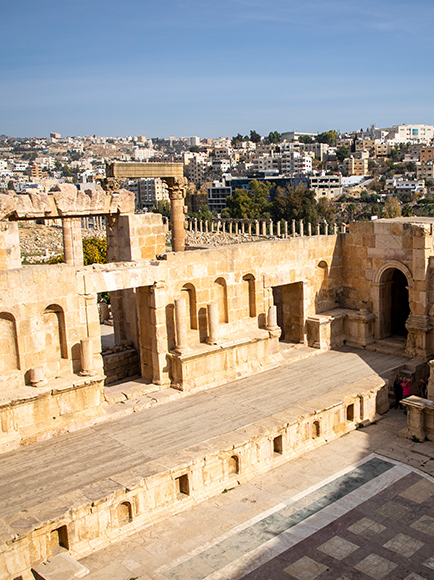Situated on the northern side of the archaeological site, this area is accessed by traversing the main thoroughfare, known as the Colonnaded Street or Cardo, through the northern pillar. Continuing along the secondary thoroughfare, Decumanus, towards the west, visitors arrive at a rectangular courtyard bordered by galleries upheld by Corinthian-style columns. This courtyard serves as the entrance to the theater. An additional stone staircase leads from the arena to the front of the dressing rooms.
The northern theater, known as the Odium, is relatively small in size compared to its southern counterpart. It likely served various purposes such as hosting poetry readings, musical performances, public gatherings, and religious speeches. Research suggests that its construction occurred in two phases: the initial phase during the third quarter of the second century AD, when the lower section was built directly into the natural rock slope, and the second phase at the beginning of the third century AD, when vaults were incorporated to support the upper portion of the amphitheater. Subsequent modifications were made to the theater during the fifth and sixth centuries AD, indicating its continued use in the Byzantine period.
The theater has a nominal capacity of around 2,500 spectators, although it has been known to accommodate even more, reaching up to approximately 4,000 attendees during concerts held at the Jerash Festival. The lower section consists of 14 rows, each equipped with radial staircases for audience access. These staircases also play a role in sound distribution. At the end of these staircases are entrances leading to the basements. On either side of these entrances, there are additional staircases that lead to the upper section of the amphitheater, and they are made up of nine rows.
